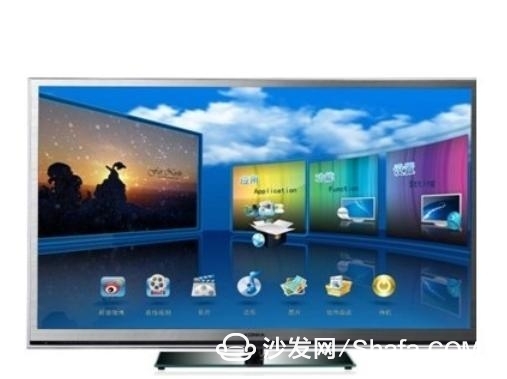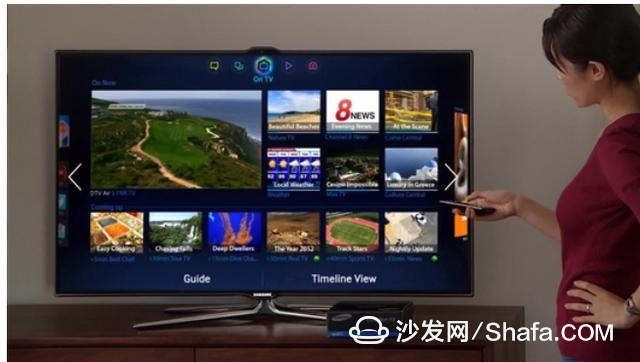Be wary of blind screen: system and content two-wheel drive

With the upgrade of the production structure of LCD panels and the drop in price, 55-inch, 65-inch, and even larger-sized products have gradually become mainstream.
At the beginning of the year, the giants Samsung, Sony, Internet manufacturers Leshi, and Xiaomi all released 65-inch, 70-inch, and 75-inch products. Later, Changhong, Hisense, Skyworth and other established manufacturers also rushed in and released a number of large-size models, even With the background of the licensee, the new Internet TV brands are still releasing an 85-inch product. It can be seen that large-size models have become a clear trend in the domestic color TV market this year.
Large-screen TVs can bring more visual shock and sensation to users, and large-screen TVs will appear more “atmosphere†when they are placed at home. However, smart TVs cannot blindly pursue large screens, but also consider specific user usage scenarios.

With the rise in housing prices last year, for most of the newly-emerged groups, most of the houses purchased were small-sized units, such as 90 flat three-bedroom units, 60 flat two-room units, and so on. These groups were mostly 80 and 90 after the Internet. The core backbone should be the mainstream crowd of smart TVs. The house is small, and the living room must be small.

Smart TVs not only carry entertainment attributes, but also are a part of home decoration. The size of smart TVs emphasizes each other's strengths and matches with the type of houses. Therefore, the main user groups are small-sized units, and the smart phone screens cannot be too large. Therefore, the smart TVs can be appropriate. There is no need for manufacturers to blindly pursue the big screen.

For the core population of the post-80s and the 90s, the operating system of content and television is the two most important factors. Especially in the current homogenization of hardware is becoming more serious, whoever has more exclusive content will have more differentiated competitive advantages.
We may wish to think about a problem, why do users need to replace the traditional TV that can still be used? There is no doubt that traditional television cannot meet the needs of users. In essence, users have initially formed a richer content payment habit. The focus of smart TVs is not "television" but internet, content. For Internet TV, the key to the explosive growth of paid video users is the construction of brand content ecology.
In addition, the richness of content can enhance user stickiness and increase boot frequency. Another major difference between smart TVs and traditional TVs is that traditional TVs are unidirectional and non-interactive, while smart TVs are connected to networks and users can be collected. Data has become a large database for the household Internet of Things and is also a new profitable point for smart TV manufacturers.

At the beginning of the year, the giants Samsung, Sony, Internet manufacturers Leshi, and Xiaomi all released 65-inch, 70-inch, and 75-inch products. Later, Changhong, Hisense, Skyworth and other established manufacturers also rushed in and released a number of large-size models, even With the background of the licensee, the new Internet TV brands are still releasing an 85-inch product. It can be seen that large-size models have become a clear trend in the domestic color TV market this year.
Large-screen TVs can bring more visual shock and sensation to users, and large-screen TVs will appear more “atmosphere†when they are placed at home. However, smart TVs cannot blindly pursue large screens, but also consider specific user usage scenarios.



We may wish to think about a problem, why do users need to replace the traditional TV that can still be used? There is no doubt that traditional television cannot meet the needs of users. In essence, users have initially formed a richer content payment habit. The focus of smart TVs is not "television" but internet, content. For Internet TV, the key to the explosive growth of paid video users is the construction of brand content ecology.
In addition, the richness of content can enhance user stickiness and increase boot frequency. Another major difference between smart TVs and traditional TVs is that traditional TVs are unidirectional and non-interactive, while smart TVs are connected to networks and users can be collected. Data has become a large database for the household Internet of Things and is also a new profitable point for smart TV manufacturers.
Smart TV/box information can focus on smart TV information network sofa butler (http://), China's influential TV box and smart TV website, providing information, communication, TV boxes, smart TVs, smart TV software, etc. Answering questions.
304 stainless steel heating element
Removable frying pot&basket with non-stick coating
Removable and heat insulation handle for frying basket
Automatic shut-off with ready alert
Prevent slip feet
Heat resistant material inside enclosure
With fan guard,more safety
Certificates: GS CE CB SAA RoHS LFGB
Colour: customized
English manual&cookbook
Air Cooker Fryer,Air Fryer Oil Free,Oil Free Air Fryer,Electric Oil Free Air Fryer
Ningbo Huayou Intelligent Technology Co. LTD , https://www.homeapplianceshuayou.com